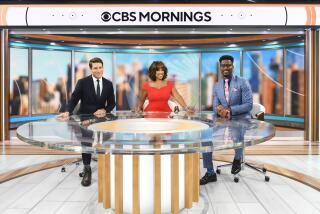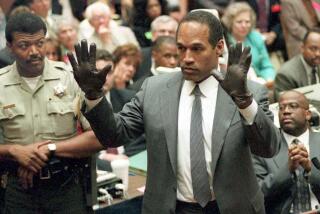Survival no mystery for CBS’ ‘48 Hours’
- Share via
NEW YORK -- If you watched “48 Hours” when it premiered in the winter of 1988, you’d barely recognize the CBS newsmagazine as it appears today.
It’s not just the title, now “48 Hours Mystery,” that’s different. The focus and ambition of the series, along with the jobs of the people who put it together, have changed in a way that reflects what has happened at broadcast news divisions over the last two decades.
“48 Hours” is a survivor’s tale.
The series’ parent was a two-hour documentary, “48 Hours on Crack Street,” a gritty look at two days at the epicenter of the drug epidemic. The idea of telling a story from several perspectives over a short period of time was intriguing, and CBS News followed up by sending nine reporting crews into the disintegrating Soviet Union for another film.
Howard Stringer, now chief executive of Sony and then CBS News president, launched “48 Hours” as a regular series partly to bolster morale at a division struggling through budget cuts.
CBS wanted to bring immediacy to storytelling, letting viewers experience what was happening rather than retelling the story later, said Susan Zirinsky, executive producer of “48 Hours Mystery.” The jumpy, stylistic way of filming seemed new then, but is commonplace now.
It was, in some ways, a precursor to reality television.
Subjects included homeless teenagers, drugs, the mentally ill, abortion clinics under siege. The effort to bring big-picture stories to a personal level seems startling in ambition in the context of today’s network news business.
It was a thrilling place to work, said Andrew Heyward, the first executive producer and later CBS News president. Also scary.
One year Heyward learned that then-CBS entertainment chief Jeff Sagansky planned to move “48 Hours” to Thursdays at 9 p.m., opposite the NBC powerhouse “Cheers.” It was a death sentence.
He flew to Los Angeles to plead for a Wednesday time slot. If “48 Hours” failed there, he’d leave without complaint. Sagansky agreed, and when the first “48 Hours” on Wednesday drew huge ratings, the show soldiered on.
That first program was about spring break, with plenty of shots of bikini-clad coeds. Things were changing.
The format of stories on a two-day clock had loosened. The time limit was extended, then eliminated altogether. “48 Hours” even abandoned for a time another signature, of being a single-topic show, although that tradition returned.
“48 Hours” tightened its focus, briefly becoming “48 Hours Investigates” to highlight its reporting, and eventually “48 Hours Mystery.” Now at home on Saturday nights, the series generally presents true crime stories, a nonfiction companion to the crime and justice entertainment series that dominate CBS’ prime-time lineup.
The show’s mystery lineup is necessary to stay alive while competing against entertainment programs, Zirinsky said.
No newsmagazine other than “60 Minutes” entices viewers now on the promise of learning something new -- just like fewer people read newspapers for the unexpected, she said. People want to know what they’re getting. That’s one factor in the demise of TV newsmagazines, she said.
“So much news is consumed in an individual way,” she said. “To get somebody’s attention, to get them to commit to you, you have to be unique.”
When not shooting crime stories, the “48 Hours” team has evolved into CBS News utility players, springing into action when big stories deserve more attention. Zirinsky produced a documentary on the 2001 World Trade Center attack, along with shows on Hurricane Katrina and the Virginia Tech shootings.
The team has also crossed over into entertainment, making webisodes to accompany the CBS series “Jericho.”
Heyward says he still watches “48 Hours Mystery” regularly and considers the show well-done. It’s far different from when he was hired as its first employee. But TV has to evolve to survive, he said. “Unless you’re ’60 Minutes,’ nothing lasts forever,” he said. “For ’48 Hours’ to last 20 years is really an incredible achievement.”
More to Read
The complete guide to home viewing
Get Screen Gab for everything about the TV shows and streaming movies everyone’s talking about.
You may occasionally receive promotional content from the Los Angeles Times.






